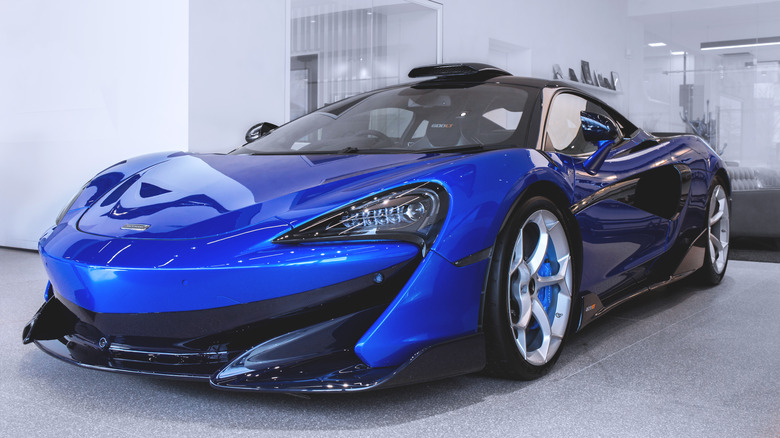Why Do Some Cars Have Roof Scoops? Here's What They're For
Automotive engineers will go to great lengths to eke an extra mpg or a few extra horses out of their vehicles, like using spoilers to help with downforce or working obsessively in the wind tunnel to make cars more aerodynamic. Some high-performance cars even have a roof scoop, a duct that usually directs air to the engine of a rear- or mid-engine vehicle.
Roof scoops are the funky looking bulges on the tops of a select few supercars and many World Rally Championship vehicles, where they aren't there to cool the engine. WRC vehicles need to be fast and light, and one way engineers shed weight is by removing all of the car's climate control equipment. Instead of having air conditioning to cool down the driver and navigator, the roof scoop redirects fast-moving air into the cabin to keep it at a reasonable temperature.
Some supercars — like the last of its kind McLaren 620R for example — have engines mounted behind the driver to help balance the car for better high-speed handling. The roof scoop on the 620R feeds air through individual air filters to the twin turbos on its 612 horsepower V8.
Different types of air scoops
Most roof scoops present themselves as a thin horizontal slot near the front edge of the roof above the windshield, although that's not the only way that roof scoops have been designed. One of the most unique designs was the vertical periscope roof scoop used on the 1965 Fiat Abarth OT 1300, with the 'OT' standing for 'Omologate Turismo.' On front-engine vehicles, a hood scoop accomplishes a similar task as a roof scoop. Hood scoops are similar in form and function to roof scoops, although their placement is obviously different. Hood scoops feed large volumes of cool, dense air directly to the filter and intake to mix with fuel for combustion.
They are much more common than roof scoops, and can be found on vehicles like the Subaru WRX, the Bond-famous Aston Martin DB4, and its DBS GT Zagato offshoot. Plenty of American-made classic muscle and sports cars used hood scoops, like the striking first-generation Ford Thunderbird, the coveted 1970-71 Plymouth Barracuda, and the 1967 Corvette Sting Ray. Although the automaker is now defunct, the Pontiac Trans Am sported a prominent two-duct hood scoop in the model's swan song year of 2002.
How roof scoops help in World Rally Championship racing
In the World Rally Championship (WRC), the cars can go 50-70 mph on curves and over 100 on straights, spending most of their runs in grueling off-road conditions. When driving at high speeds on dirt, gravel, snow, and mud, a vehicle's HVAC system quickly gets clogged with dust and debris. The Lancia Stratos was one of the first rally cars to sport a roof scoop almost 50 years ago, and the design has been constantly refined since.
Temperatures in rally vehicles can exceed 150 degrees Fahrenheit, and roof scoops actually do more than keep drivers safe and alert. The placement on the roof of the vehicle helps it provide additional downforce. To maximize this effect, modern roof scoops are designed to be as close to the roof line as possible. There's no one-size-fits-all formula for roof scoops, and you'll see different shapes, sizes, and placements on each team's vehicle.


